Terino, E.
Facial Plastic Surgery Clinics of North America, 2008-05-01, Volúmen 16, Número 2, Pages 165-171
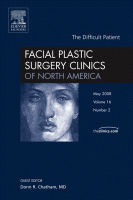 With the popularity of cosmetic surgery procedures, it is vital that the surgeon select patients for procedures who likely will benefit, handle stress in a healthy manner, and not pose an undue level of aggravation to the surgeon and staff. By using a carefully planned preoperative written assessment, the surgeon can help identify patients who, for psychologic reasons, are emotionally suitable for such surgery.
With the popularity of cosmetic surgery procedures, it is vital that the surgeon select patients for procedures who likely will benefit, handle stress in a healthy manner, and not pose an undue level of aggravation to the surgeon and staff. By using a carefully planned preoperative written assessment, the surgeon can help identify patients who, for psychologic reasons, are emotionally suitable for such surgery.
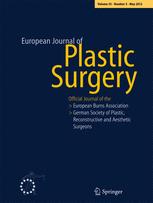 Autologous fat transplantation is a promising technique for soft tissue augmentation. However, the long-term maintenance of fat grafts remains unpredictable. Based on Peer’s cell theory, techniques that cause less cellular damage will optimize graft integration. Water jet-assisted liposuction (WAL) was introduced as a gentle and efficient technique for harvesting a large volume of fat in a short period of time. In this study, we evaluated the viability and function of adipocytes and preadipocytes harvested using WAL and compared this with the Coleman technique.
Autologous fat transplantation is a promising technique for soft tissue augmentation. However, the long-term maintenance of fat grafts remains unpredictable. Based on Peer’s cell theory, techniques that cause less cellular damage will optimize graft integration. Water jet-assisted liposuction (WAL) was introduced as a gentle and efficient technique for harvesting a large volume of fat in a short period of time. In this study, we evaluated the viability and function of adipocytes and preadipocytes harvested using WAL and compared this with the Coleman technique. Late haematomas and seromas (≥4 months postoperatively) in breasts with silicone prosthesis have been reported. Since 2001, there have only four patients with such delayed complication visiting our hospitals. The purpose of this literature review and our case presentation is to have more understanding about the clinical symptoms, surgical managements and relationship with implants for this late complication.
Late haematomas and seromas (≥4 months postoperatively) in breasts with silicone prosthesis have been reported. Since 2001, there have only four patients with such delayed complication visiting our hospitals. The purpose of this literature review and our case presentation is to have more understanding about the clinical symptoms, surgical managements and relationship with implants for this late complication.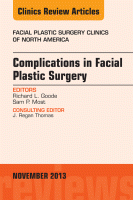 Rhytidectomy remains a challenging surgical procedure for even the most experienced aesthetic plastic surgeons. The challenges are compounded by complications that are inherent to this procedure and place added pressure on the doctor-patient relationship. Expectations for both parties are high and the margin for error nil. This article presents a personal approach to the avoidance and management of complications associated with facelift surgery. It presents the author’s personal approach as a plastic surgeon in the practice of aesthetic plastic surgery over the past 25 years. Clinical pearls are provided to obtain optimum results in rhytidectomy and limit associated sequelae.
Rhytidectomy remains a challenging surgical procedure for even the most experienced aesthetic plastic surgeons. The challenges are compounded by complications that are inherent to this procedure and place added pressure on the doctor-patient relationship. Expectations for both parties are high and the margin for error nil. This article presents a personal approach to the avoidance and management of complications associated with facelift surgery. It presents the author’s personal approach as a plastic surgeon in the practice of aesthetic plastic surgery over the past 25 years. Clinical pearls are provided to obtain optimum results in rhytidectomy and limit associated sequelae.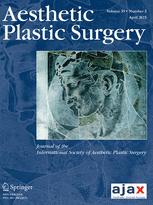 Several companies offer anatomically shaped breast implants but differences among manufacturers are often misunderstood. The shell texture is a crucial parameter for anatomically shaped implants to prevent rotation and to decrease the risk of capsular contracture, even though concerns have recently been raised concerning the complications associated with textured breast implants. The aim of this study was to characterize differences in terms of texture, cell adhesion, shape, and stiffness between some commonly used anatomically shaped implants from three different manufacturers.
Several companies offer anatomically shaped breast implants but differences among manufacturers are often misunderstood. The shell texture is a crucial parameter for anatomically shaped implants to prevent rotation and to decrease the risk of capsular contracture, even though concerns have recently been raised concerning the complications associated with textured breast implants. The aim of this study was to characterize differences in terms of texture, cell adhesion, shape, and stiffness between some commonly used anatomically shaped implants from three different manufacturers.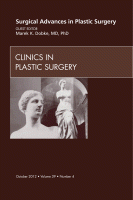 Invasive and noninvasive plastic surgical procedures have undergone exponential growth over the last 30 years, due in part to an expansion of extensive basic and clinical research. The purpose of this article is to examine how plastic surgeons learn to use novel technology in their practices. In addition, a critical evaluation of current teaching methods as they relate to surgeon competence in these new technologies is discussed. Mention of specific technologies is done for demonstrative purposes to illustrate how practitioners of plastic surgery gain competence in their safe and effective use.
Invasive and noninvasive plastic surgical procedures have undergone exponential growth over the last 30 years, due in part to an expansion of extensive basic and clinical research. The purpose of this article is to examine how plastic surgeons learn to use novel technology in their practices. In addition, a critical evaluation of current teaching methods as they relate to surgeon competence in these new technologies is discussed. Mention of specific technologies is done for demonstrative purposes to illustrate how practitioners of plastic surgery gain competence in their safe and effective use. Evidence-based medicine (EBM) is being embraced by plastic surgery. Patient values are combined with scientific data to complement a plastic surgeon’s clinical experience. However, because scientific data are difficult to distill from the aesthetic literature, there are significant challenges to integrating EBM principles into the art of aesthetic surgery. The primary dilemmas are to define the desired goals of aesthetic surgery and determine how outcomes can be measured; these challenges still face this subspecialty of plastic surgery. The article presents an objective view of evidence – based medicine application to aesthetic surgery. The challenges are discussed and the points that create them are analyzed. Psychological and external factors in decision-making for aesthetic surgery are presented. The handling of surgical complications is presented as an example affecting reporting of outcomes.
Evidence-based medicine (EBM) is being embraced by plastic surgery. Patient values are combined with scientific data to complement a plastic surgeon’s clinical experience. However, because scientific data are difficult to distill from the aesthetic literature, there are significant challenges to integrating EBM principles into the art of aesthetic surgery. The primary dilemmas are to define the desired goals of aesthetic surgery and determine how outcomes can be measured; these challenges still face this subspecialty of plastic surgery. The article presents an objective view of evidence – based medicine application to aesthetic surgery. The challenges are discussed and the points that create them are analyzed. Psychological and external factors in decision-making for aesthetic surgery are presented. The handling of surgical complications is presented as an example affecting reporting of outcomes.






 Sitio web publicado el
Sitio web publicado el
Los lectores comentan